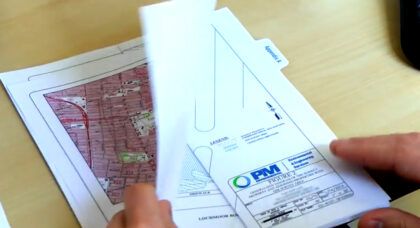Protecting Children from Dangerous Lead Exposure
Lead is a naturally occurring element and is found in virtually every part of the environment. But with high amounts of exposure to lead-based products, your child’s health may be put at risk. PM Environmental, Inc., tests properties for lead or lead compounds, especially those built prior to 1978, which could contain various lead-based products.
Lead poisoning can be harmful to the health of humans and animals. In the 90s, the Secretary of the Department of Health and Human Services deemed lead-based materials the No. 1 health risk for children in the U.S.
The Environmental Protection Agency (EPA) issued a Renovation, Repair and Painting (RRP) rule for a daycare or childcare facility undergoing sanding, cutting or demolition, but there are still some surprising ways you and your family can be exposed to lead.
“Lead paint was used on various surfaces, walls, windows, window frames, window sills and around doors. These are surfaces with high friction, which could cause paint to flake off or create hazardous dust,” said Industrial Hygiene Services Manager Jon Balsamo.
Lower levels of lead exposure can adversely affect the brain, central nervous system, blood cells and kidneys but lead poisoning can potentially lead to death. Children under the age of six are especially at risk during critical developmental stages. “Kids are more susceptible for ingesting lead particles because there’s a possibility that dust from lead-based paint cracking or peeling off is in contaminated soil or on playground equipment outside where children are playing,” Balsamo said. A thorough inspection of the interior and exterior of a property could prevent future dangerous lead or lead compounds that circulate and travel in the air.
Other potential lead sources include leaded gasoline, pipes and plumbing materials, batteries, drinking water, ceramics and consumer products, as these lead-based products were previously used in the construction industry.
To ensure schools and childcare facilities are safe from lead-based paint and other lead materials, Balsamo said it’s important to practice good hygiene and clean toys, bottles or other items that fall on the floor. Also, make sure your child washes their hands after playing outside and be wary when your child is near any paint that is cracking, peeling or chipping. Lead paint chips can taste sweet so children and pets are attracted to it, making it especially dangerous.
Symptoms of lead poisoning, such as loss of appetite, irritability, sluggishness, fatigue and abdominal pain, among others, often go unnoticed so it’s imperative that proper lead inspection be completed by a trained professional. The cost of identification and removal of lead substances varies depending on the size of the property and the number of samples collected. “We take settled dust wipe samples in representative units throughout the building to determine what the lead concentrations in the dust,” Balsamo said.
For conclusive results, lead recommendations and property site pricing are given on a case-by-case basis.
Publication Details
Date
July 31, 2015



